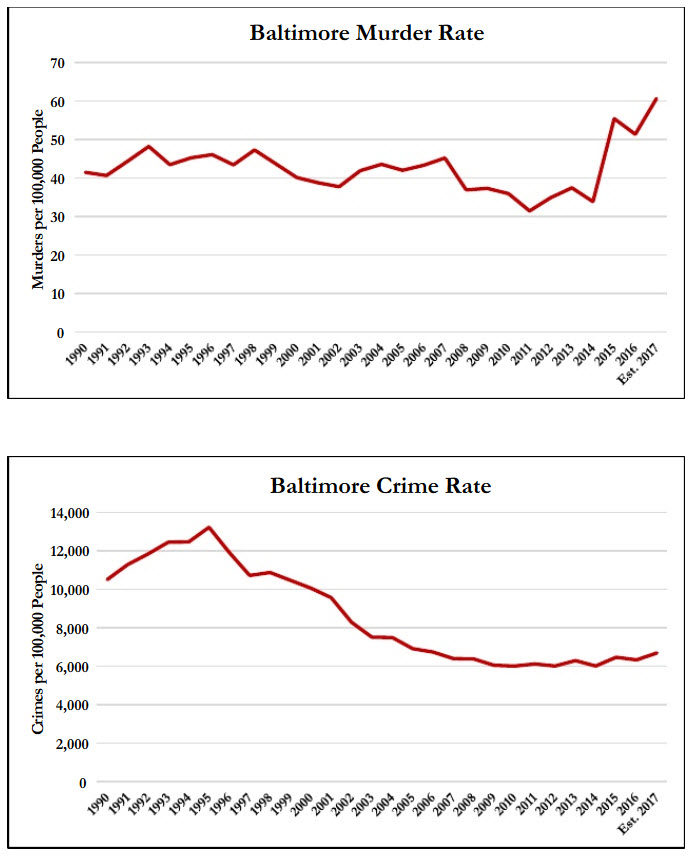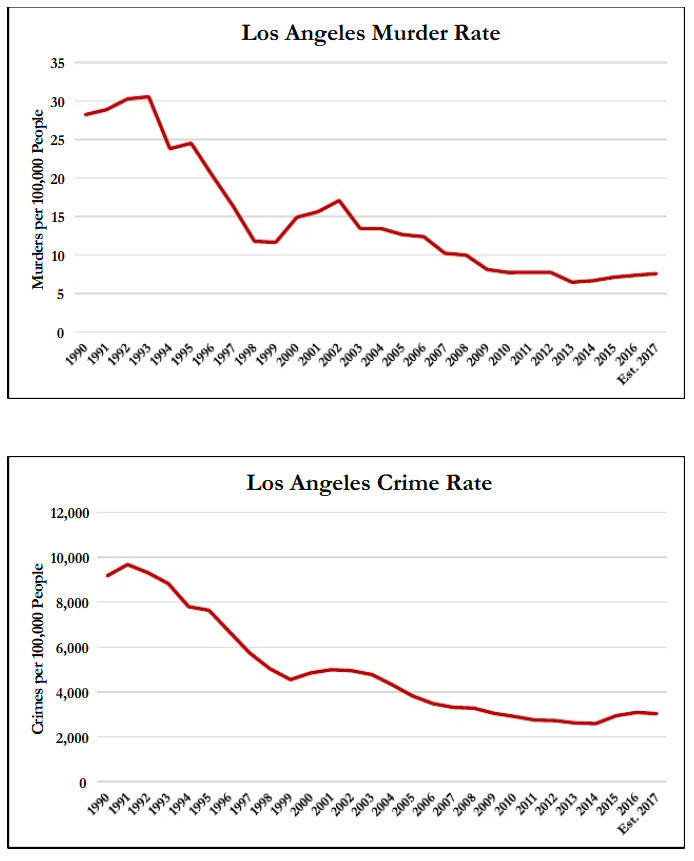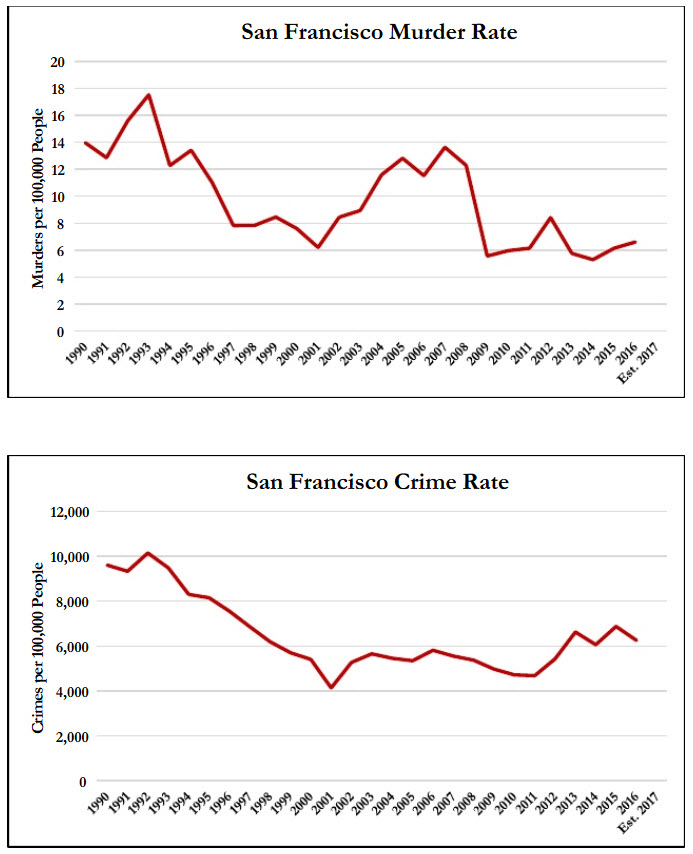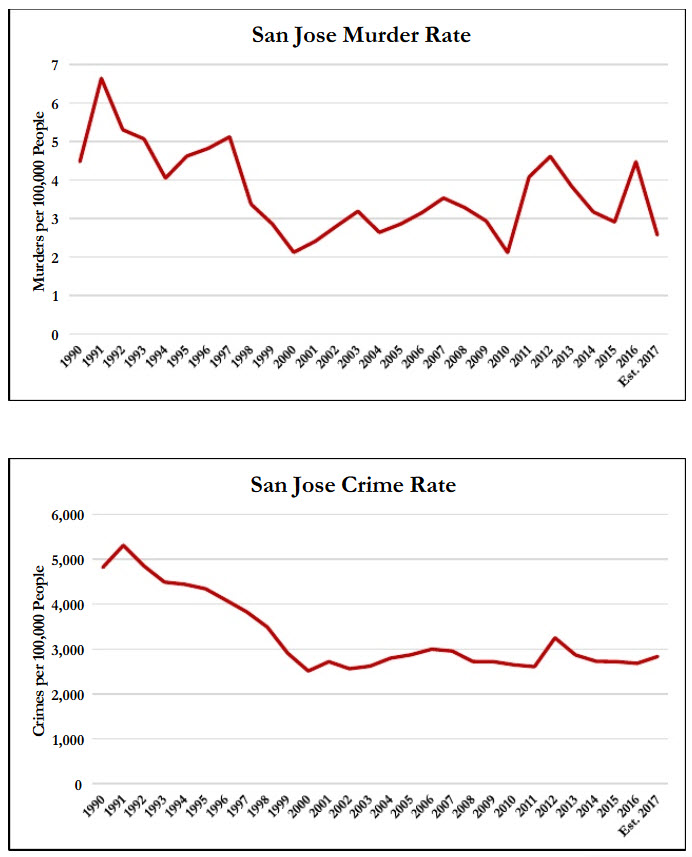
 Contrary to claims by Attorney General Jeff Sessions, a new report by the Brennan Center for Justice has found that crime is going down in 2017.
Contrary to claims by Attorney General Jeff Sessions, a new report by the Brennan Center for Justice has found that crime is going down in 2017.
That hasn’t stopped the administration from arguing the opposite case, such as Mr. Sessions did on August 28 in a speech before the National Fraternal Order of Police where he said, “After decreasing for nearly 20 years because of the hard but necessary work our country started in the 1980s, violent crime is back with a vengeance.”
Critics were quick to point out that the nation’s crime rate and violent crime rate were near 45-year lows.
“Crime is at historically low levels,” said Nick Petersen, assistant professor of sociology at the University of Miami. “There may be small increases month to month and year to year, but there is a little random noise in the fluctuations.”
Now a new report validates that view.
“An analysis of new 2017 crime data shows that all measures of crime — overall crime, violence, and murder — are projected to decline this year,” the Brennan Center reported in a press release on Wednesday.
“The report estimates that the overall crime rate and the violent crime rate will be at their second-lowest levels since 1990. These findings directly undercut any claim of a national crime wave,” they write.
In Crime in 2017: A Preliminary Analysis, researchers at the Brennan Center for Justice at NYU School of Law collected crime data directly from local police departments in America’s 30 largest cities, and then used historical trends to estimate 2017 year-end crime numbers.
Among the key findings:
- The overall crime rate in 2017 is projected to decrease slightly, by 1.8 percent. If this estimate holds, 2017 will have the second-lowest crime rate since 1990.
- The violent crime rate is projected to decrease slightly, by 0.6 percent, essentially remaining stable. This result is driven primarily by stabilization in Chicago, and declines in
 Washington, D.C., two large cities that experienced increases in violence in recent years. The violent crime rate for this year is projected to be about 1 percent above 2014’s violent crime rate, the lowest recorded since 1990.
Washington, D.C., two large cities that experienced increases in violence in recent years. The violent crime rate for this year is projected to be about 1 percent above 2014’s violent crime rate, the lowest recorded since 1990. - The 2017 murder rate is projected to be 2.5 percent lower than last year. This year’s decline is driven primarily by decreases in Detroit (down 25.6 percent), Houston (down 20.5 percent), and New York (down 19.1 percent). Chicago’s murder rate is also projected to fall, by 2.4 percent. The 2017 murder rate is expected to be on par with that of 2009, well at the bottom of the historic post-1990 decline, yet still higher than the lowest recorded rate in 2013.
- While crime is down this year, some cities are projected to experience localized increases. For example, Charlotte’s murder rate doubled in the first six months of 2017 relative to last year. Detailed graphs on each of the 30 cities where data was available is included in Section III.
“The numbers show that crime and murder are expected to fall in the nation’s largest cities this year, a sign that grim warnings about a nationwide crime wave remain unfounded,” said Ames Grawert, counsel in the Brennan Center’s Justice Program. “Crime remains close to record lows, in the nation as a whole and in our city centers.”
“Our organization has its own experience analyzing data in major cities, and the Brennan Center research team’s methodology and analysis here is sound,” said Darrel Stephens, executive director of the Major Cities Chiefs Association. “They estimate crime and murder will decrease this year, which is welcome news for law enforcement officers. We’re hopeful that will remain the case when final numbers come in at the end of the year.”
“This latest data from the Brennan Center undercuts any claims of a national crime wave,” said Mark Holden, general counsel and senior vice president at Koch Industries. “But there’s still much work to be done. We should learn from the dozens of states that have made moves to successfully reduce crime, incarceration, and recidivism together. Such common-sense reforms make everyone safer, including law enforcement officers, and ensure that decades of bi-partisan progress continue.”
“Fears of a national crime wave pushed by President Trump and Attorney General Sessions have been used to justify or promote controversial changes on everything from sentencing practices, to drug policy, to immigration enforcement,” said Inimai Chettiar, director of the Brennan Center’s Justice Program. “Fear sells, and the administration hopes people will buy it. But, their claims aren’t backed up by the facts.”
Here are some of the cities that they report on.
Baltimore’s murder rate has soared in recent years but their overall crime rate is fairly flat.

Chicago notoriously had a surge in the murder rate in 2016, but that number is projected to fall slightly and still remains below the early 90s peak. Meanwhile, the overall crime rate in Chicago is near the 45-year low.

In New York both the crime and murder rates are at historic lows.

In California, we see that L.A.’s murder rate has ticked up slightly since 2013, but the crime rate has dipped a little off a slight increase in 2016.

In San Francisco, the murder rate has ticked up but the crime rate has ticked down.

In San Jose, the murder rate has fluctuated with a sharp drop in 2017, while the crime rate is fairly flat.

—David M. Greenwald reporting


